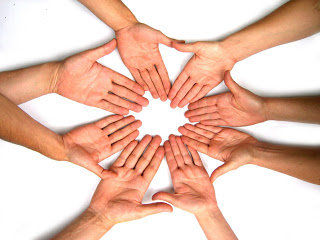 Snuggled up with my son that evening twelve years ago, quietly crying together over the eventual loss of one another in some imagined future, I could honestly reassure him that my love for him is as strong as anything life can toss at us. And our love is likely to even outlast our death. Drawing on our trust, faith, and love for one another; we managed to create a little life raft that evening with our intertwined bodies. A raft we still rely on during tough times.
Snuggled up with my son that evening twelve years ago, quietly crying together over the eventual loss of one another in some imagined future, I could honestly reassure him that my love for him is as strong as anything life can toss at us. And our love is likely to even outlast our death. Drawing on our trust, faith, and love for one another; we managed to create a little life raft that evening with our intertwined bodies. A raft we still rely on during tough times.Since that night, as my son is approached adolescence (soon facing the possibility that a friend will offer him his first alcoholic drink), we have spoken much more candidly about our family’s history of alcoholism. We have discussed the risks associated with this genetic loading. The preventative steps we have taken as a family to confront addiction head-on to protect his generation include having open, honest, discussions about the realities of today’s peer pressure, substance use/abuse, and the nature of addiction itself. Such candid discussions are an indication that the tides have turned in my family’s favor this generation. Our conversations are not fear-based, but proactive and educational. Fear, after all, has a nasty way of bringing about exactly the result we may well want to avoid. I trust that by being open and honest, by modeling healthy behaviour, and by having started these difficult discussions early, that my son will always feel free to approach my husband or myself with any number of difficult topics.
 In stark contrast to a Tibetan friend, Sonam, whom I met whilst living Japan in my late twenties, I did not grow up learning to meditate on my own death (a Buddhist practice with the aim of infusing reverence and gratitude for life through acceptance and a focus on the present moment). My daily childhood practice looked more like sharing in the family chore of sweeping the painful stuff under the living room carpet. When my dad died, there was little done to ritualize or honor his death, let alone talk about it. I was adrift in my own ocean of complicated grief for many years, with little land in sight. Sonam, in stark contrast, spoke of the peace and gratitude she felt about her father’s death when she, too, was in her teens. Peace, I could understand that with all her years of meditation. But, gratitude? She shared with me that her father had meditated and prepared for his death for months in advance. He had lived a good life and accepted his own death; he died peacefully with his family surrounding him in prayer. She possessed an uncanny grasp of both the preciousness and yet transitory nature of life. Sonam did not grieve for years, as I had. She had accepted her father’s fate, and dwelled in gratitude for the time she had had with him. She gained peace from his acceptance and grace in death. Ultimately, her religious faith was deeply grounding for her. Her faith seemed to strengthen her and offered her spiritual courage and hope for the future. It would take me many more years after losing my father to cultivate such a spiritual foundation.
In stark contrast to a Tibetan friend, Sonam, whom I met whilst living Japan in my late twenties, I did not grow up learning to meditate on my own death (a Buddhist practice with the aim of infusing reverence and gratitude for life through acceptance and a focus on the present moment). My daily childhood practice looked more like sharing in the family chore of sweeping the painful stuff under the living room carpet. When my dad died, there was little done to ritualize or honor his death, let alone talk about it. I was adrift in my own ocean of complicated grief for many years, with little land in sight. Sonam, in stark contrast, spoke of the peace and gratitude she felt about her father’s death when she, too, was in her teens. Peace, I could understand that with all her years of meditation. But, gratitude? She shared with me that her father had meditated and prepared for his death for months in advance. He had lived a good life and accepted his own death; he died peacefully with his family surrounding him in prayer. She possessed an uncanny grasp of both the preciousness and yet transitory nature of life. Sonam did not grieve for years, as I had. She had accepted her father’s fate, and dwelled in gratitude for the time she had had with him. She gained peace from his acceptance and grace in death. Ultimately, her religious faith was deeply grounding for her. Her faith seemed to strengthen her and offered her spiritual courage and hope for the future. It would take me many more years after losing my father to cultivate such a spiritual foundation.













